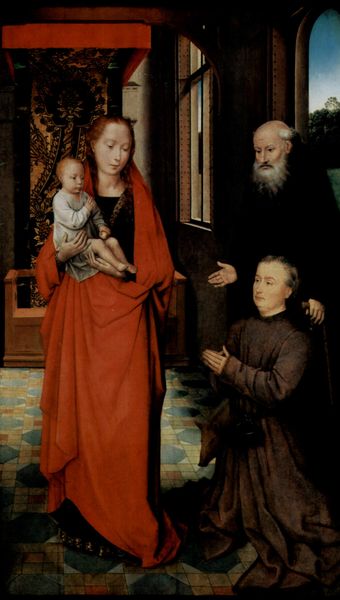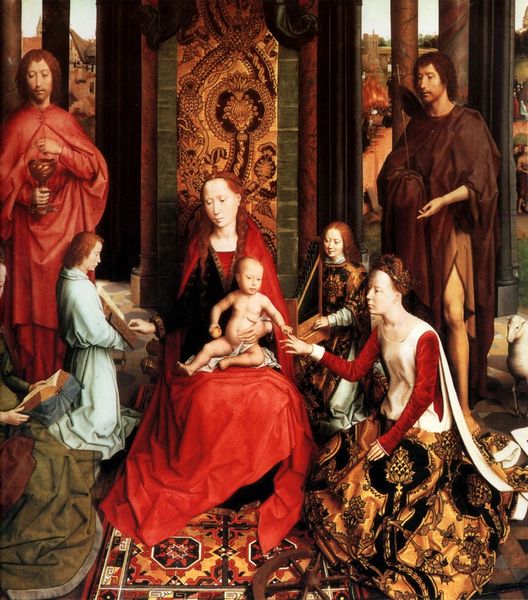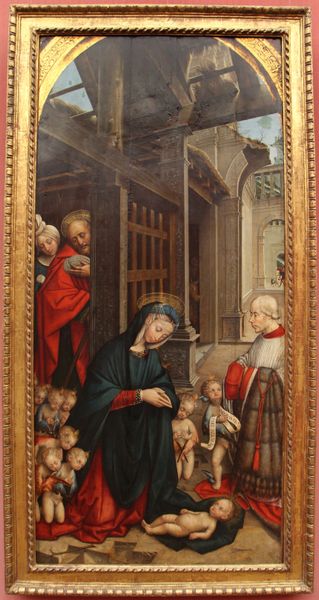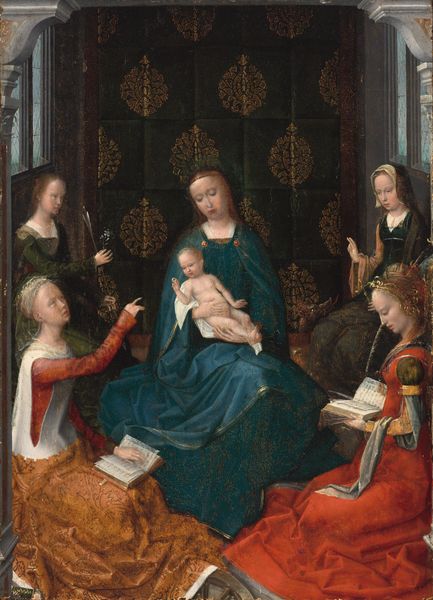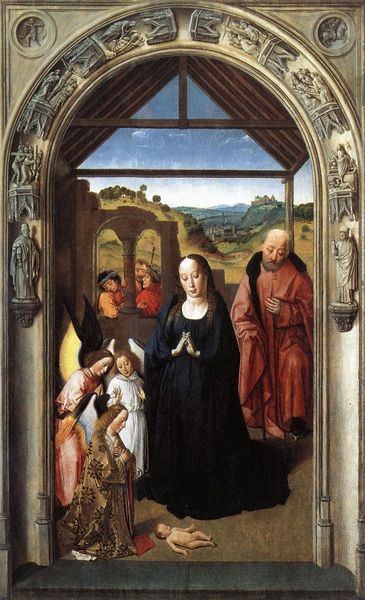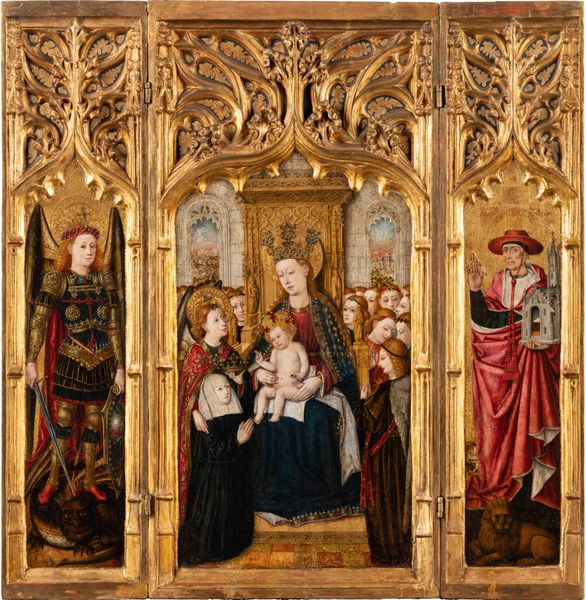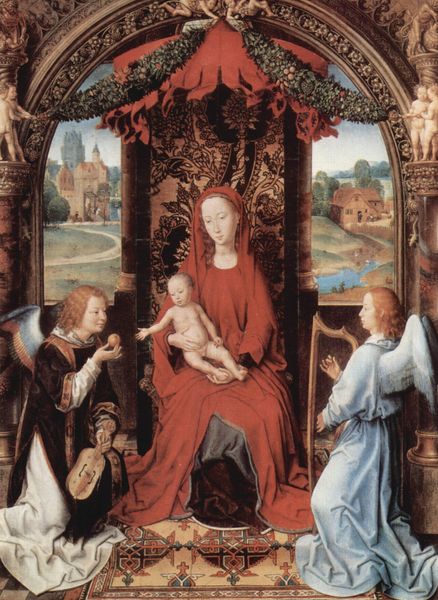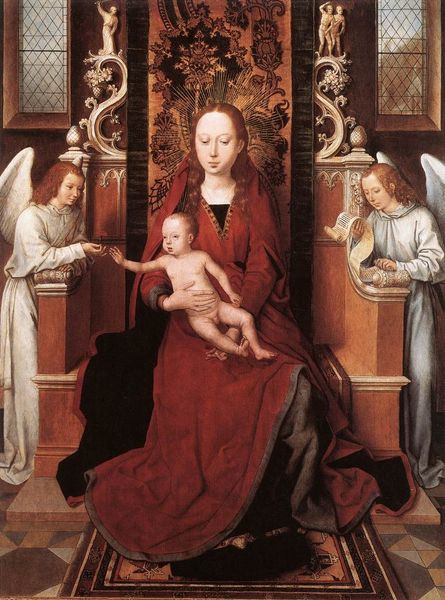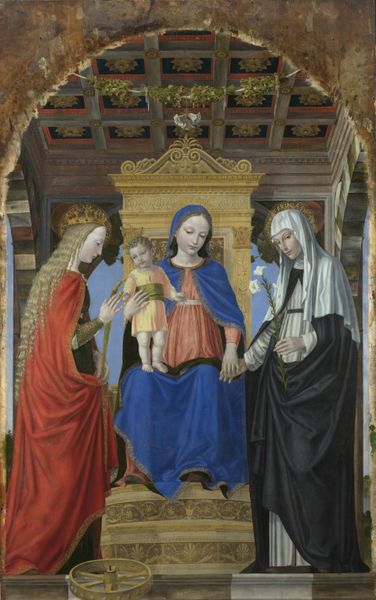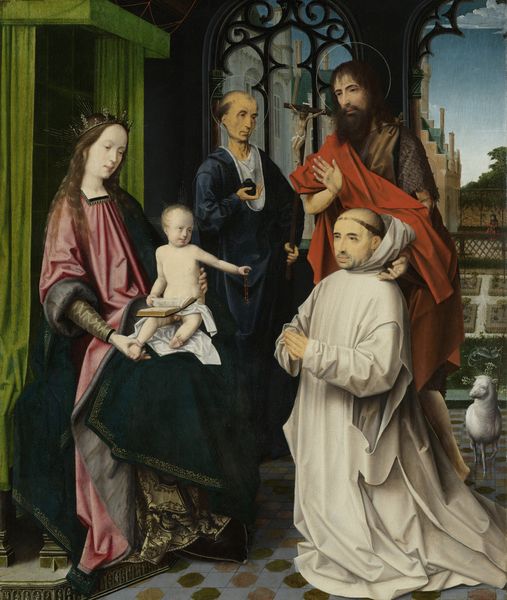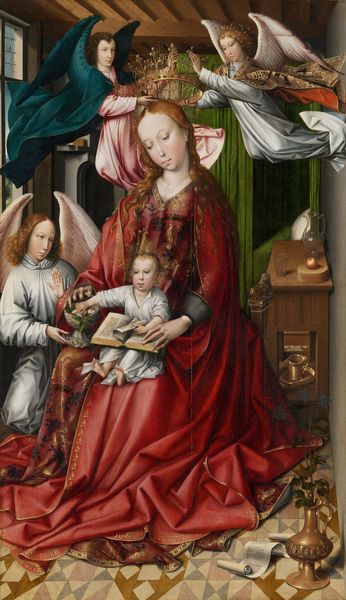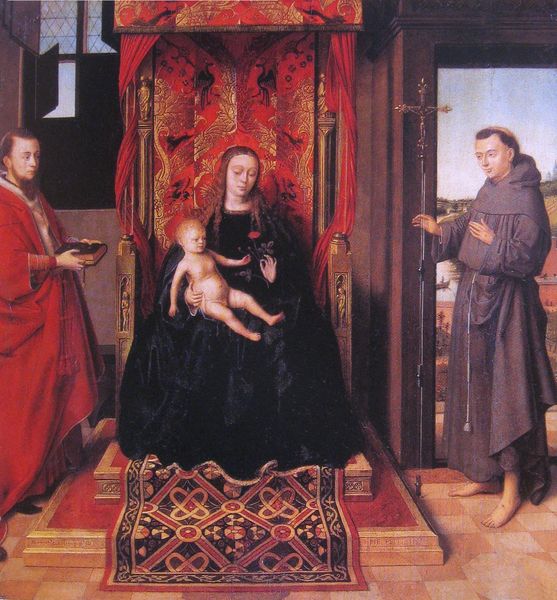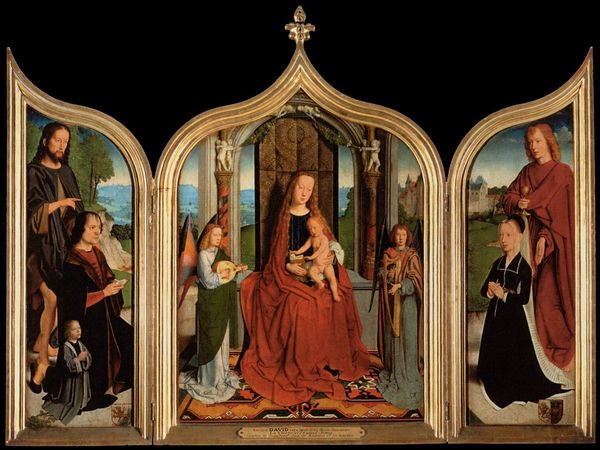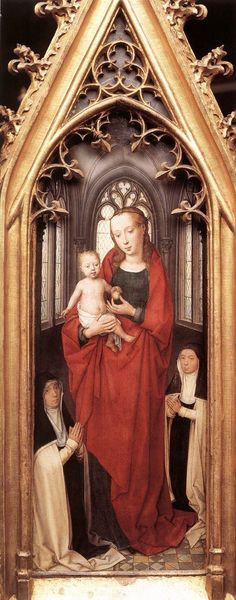
painting, oil-paint
#
portrait
#
painting
#
oil-paint
#
sculpture
#
portrait subject
#
figuration
#
child
#
portrait head and shoulder
#
christianity
#
history-painting
#
northern-renaissance
#
portrait art
#
virgin-mary
#
fine art portrait
#
christ
Dimensions: 132 x 43 cm
Copyright: Public domain
Editor: Here we have the rear of the wings from Gerard David's Triptych of Jan Des Trompes, painted around 1505. These oil paintings have a quiet, contemplative atmosphere to me. What immediately catches your eye, and how do you interpret it? Curator: For me, the gray-green stone facades—architectural stage sets!—narrate absence, what's unseen yet implied. David paints *backs*, potential yet deferred, like unopened letters holding unsent emotions, almost a meditative anti-narrative. Note how meticulously he renders not the faces of saints but *traces* of their devotional aura! What could it mean? What do *you* make of their positioning, as *images* of portraits, not portraits of humans, but portraits of devotional images themselves? Editor: So, a step removed from reality. The Trompes family weren't commissioning a painting of themselves directly in the divine presence, but more the idea of their devotion, represented indirectly. Curator: Precisely. It's a quiet hum of *maybe*, painted on a surface usually hidden, now sung as an anthem of whispered hope. Look at Mary, in a doorway or is she inside already? It's not even in a divine place; she is at the entrance... maybe suggesting hope is always an invitation? Editor: So much symbolism hidden in plain sight! I was focusing on the figures, but now the architecture whispers secrets. Curator: Art is a constant negotiation, a conversation across centuries and consciousness. You start with faces. Then David makes us see doors. The best art never gives you all the answers!
Comments
No comments
Be the first to comment and join the conversation on the ultimate creative platform.
